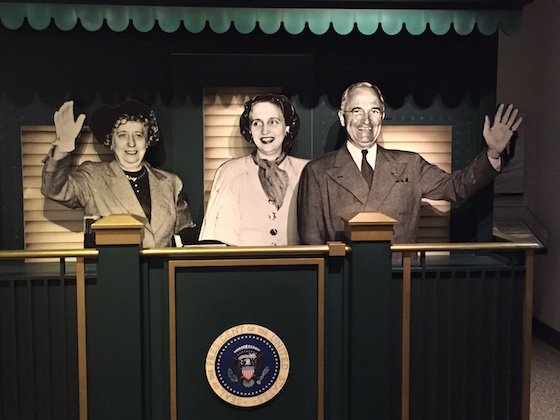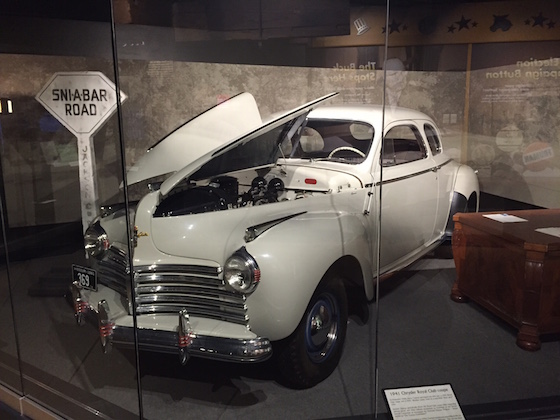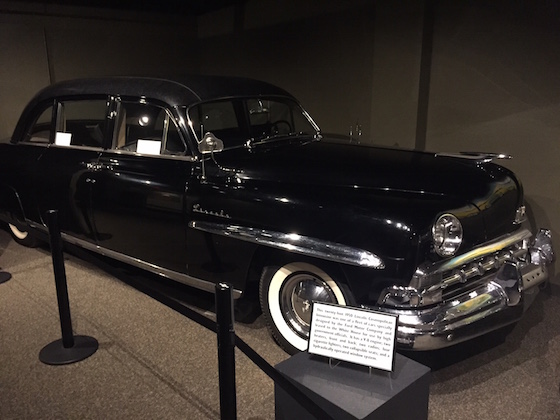Memo From Frank
Halloween is coming up, and while many people love surprised, I hate them. I like to know exactly what’s going to happen and I hate things not going as planned. As a result, I’m a huge believer in during the proper due diligence on any billboard that you are looking at building or buying. Benjamin Franklin said that “diligence is the mother of good luck” and he was 100% as correct today as he was in 1776. Never build a sign without knowing precisely what height and size to build, and making sure you can fit the sign on that exact spot. And never buy a billboard unless you know that the ground lease and permit are true and correct, and that you know the market well. Surprises are great when they are Baby Ruth bars, but they’re awful when they cost you money.
When Does Blockage Render A Sign Useless?

It’s every billboard owner’s horror to see that their sign has been blocked by a neighboring tree, flag, building or sign. You can also find many abandoned billboards that got that way because of being blocked, and might be purchased for a song. So how do you evaluate blockage, and how do you fix it?
When you can’t rent the ad space for the amount you budgeted
When you built or bought the billboard, you had a budgeted amount for monthly rent for each sign face. If you can’t get that because of blockage, then you have a problem. There are some signs that have such a great location that mild blockage still allows you to get full rent. But for most signs, you have a blockage problem when you can’t rent the sign for the same price as it would without the blockage. And each blockage issue must be addressed on a one-off basis, because there are many factors that determine the significance of the blockage to the advertising value.
When you don’t have 400 feet of clear read
Technically, that’s the definition of blockage: not having 400 feet of clear read of the sign. At 55 mph, 400 feet of read time translates to about four seconds of viewing time. If there is no blockage within the final 400 feet of the sign, then it’s technically not blocked. However, some advertises are expecting much more, because they get spoiled by signs that have 1,000+ feet of clarity. This is a little silly, because you cannot physically read most signs until you are within 400 feet of them.
When you can’t see the sign at any distance
In some parts of America, like Atlanta and Houston, advertisers have traded off that 400 feet of clarity for a farther metric. If you are in an area that has plenty of large and tall trees, the only way to see a sign is when it towers above the trees, and that means the sign is out of your windshield for the last 400 ft. Instead, they rent signs and produce copy that is twice the size in order to be seen from afar. In those markets, blockage is common, so advertisers have resigned themselves to seeing signs at 1,000+ feet and nothing more.
When you can’t fix the problem at any price that makes sense
There is a way to fix almost every obstruction. Short signs can be raised. Trees can be chopped down or trimmed. All of these options, however, cost money. And some require amendments to permits and other regulations. But you should never give up on a sign because or blockage – give the solution a try. I once bought a sign that had a ton of tree blockage. I went to the neighbor and bought the right to trim the trees back for $500. You will be amazed at how many of these situations you can resolve with some ingenuity and cash.
Extra tip: Always fix the blockage before you build or buy the sign
When you fix the blockage to a sign, you create a huge amount of value. So always get your agreements in writing before you fix the blockage; afterward, the sign owner may not sell to you. And if you build the sign and the blockage from a certain oak tree is visible to the whole world, it’s unlikely the tree owner will let you trim it without paying some big bucks. Instead, get permission to trim and complete the work before you build the sign.
Extra tip #2: Never listen to what others say about fixing the blockage
I once bought a billboard in downtown Dallas that had a very serious blockage problem – there was a parking lot sign visually right in the middle of the sign face. I was told that there was no way to fix the blockage. So I bought the sign for scrap for $4,000. Then I went to the parking lot owner and said “can I do something about your sign?” He said “yeah, why don’t you lower it, because the billboard blocks my sign coming from the other direction. What happened here? Basically, everyone had gone on the verdict of the one billboard guy who said there was no way to fix it. I have learned that you never listen to anyone – you try yourself to see the truth.
Conclusion
Understanding blockage is a critical skill in evaluating billboard opportunities. And learning how to fix obstructions is another important trait to develop. When you combine both skills, you have to ability to make a ton of money, and to keep from losing that cash.
Think Outside The Box To Please Your Property Owner

Most people have no creativity when it comes to billboard pole aesthetics. I’m not sure why, as the early founders of the industry put a huge amount of effort into it. But I guess that skill was not passed down from generation to generation, and has now been largely forgotten.
There is no business reason not to customize the poles other than cost
Some sign owners believe that the poles must all be identical on every sign. They think that their corporate identity is tied up in the paint color of the pole. While I think that the skirting and shield should be comparable on all signs in your portfolio, nobody seriously gets any corporate identity value from the poles. Based on that, I think that smart operators match the pole to the property owner’s needs, and not some goofy idea of corporate P.R. The property owner has to look at the pole 24/7, while you only see it a few times per year. A happy property owner renews the lease and causes no problems. An unhappy property owner gets sick and tired of the sign and is not willing to sign that renewal.
There are many things you can do to the poles that are not prohibitively expensive
The early industry founders spent too much money on sign structure aesthetics. They had expensive plaster casts made of ionic columns and gargoyle, just like office buildings of that period. Those concepts are too expensive to replicate today. But how about painting the pole to match the building it’s up against? Just painting the poles to match the property is a great start. A notch up from that is to disguise the pole from the ground, covering it with everything from bricks, to stucco, to reflective laminates. Or, failing any of these alternative, planting vertical growing shrubs at the base.
But there are limitations
The bricked column I built on the sign shown above was about as far as you can go. It cost $10,000 to do, which was 30% of the total cost of the sign to build. It had never been done before, to my knowledge, and everyone was a little worried of how it would work out (including me). Would it crack and fall over time? Would it come crashing down on the cars in the parking lot? I think any treatment of a pole must be judged on three factors: 1) initial cost 2) maintenance cost and 3) safety. Even the greatest sign in the world cannot afford a pole covered in gold and diamonds.
Conclusion
There are creative solutions to many billboard pole aesthetics. Think outside the box and it might allow you to obtain that lease that nobody has been able to sign up before. It might also make your lease renewal a whole lot easier.
Billboard Home Study Course
![]() How to Find a Billboard Location
How to Find a Billboard Location
![]() How to Buy a Billboard
How to Buy a Billboard
![]() How to Build a Billboard
How to Build a Billboard
![]() How to Operate a Billboard
How to Operate a Billboard
![]() How to Rent Ad Space on a Billboard
How to Rent Ad Space on a Billboard
![]() How to Sell a Billboard
How to Sell a Billboard
Get Your Copy Now!
A Billboard Halloween Story

There was an old billboard on I-35 south of Dallas that I looked at buying. It was abandoned, and covered in vegetation. I pulled over on the highway and walked over to the sign (the sign had no access other than from the highway right-of-way). As I was walking, I came across some large stones at the base of the sign. I started to pull off some of the vegetation to see how the sign was built, and I immediately realized that the stones were headstones – I was in an old, abandoned cemetery. And the billboard was not on the edge of the cemetery, it was in the cemetery. The poles (there were three) had probably been drilled right down through several grave sites. How was this possible? The sign had been built back around the 1950s, at the same time that the interstate highway system was in full swing, and many a cemetery was plowed under to build these highways. So I think that this sign was probably built at a time when cemeteries were looked on as an inconvenience and not something to be preserved. We called this sign the “haunted billboard”. We were unable to ever get the seller to agree to a price, and kind of lost interest in it because of the concerns about its location. I was in Dallas recently, and the sign was gone – probably removed so that nobody ever asked how it got there. If there was ever a poltergeist billboard, this was it!
Fun On The Road: Harry Truman Museum In Independence, MO

One of my favorite parts about billboards is driving around and seeing all the interesting things to be found on the American road. Recently, I was driving through Kansas City, and stopped at the Harry S. Truman Museum in Independence, Missouri. As far as Presidential museums go, it’s pretty small, but it’s a fascinating glimpse of America just the same. Truman was the President who got into office without being elected – he was Vice-President when F.D.R. passed away. Truman had been the owner of a menswear store before he got into politics, and never had much of an appetite for formality. He won an epic battle against Dewey for re-election, and then did not run for another term. He spent the rest of his life walking around Independence and helping to manage the museum. One interesting fact is that there was no Secret Service protection for past Presidents until Kennedy was assassinated, so Truman used to walk around Independence by himself, although he was later followed by an Independence policeman to make sure he did not fall down.


New Billboards For Sale On OutdoorBillboard.com
The Market Report
Prices Are Delayed By At Least 15 Minutes
